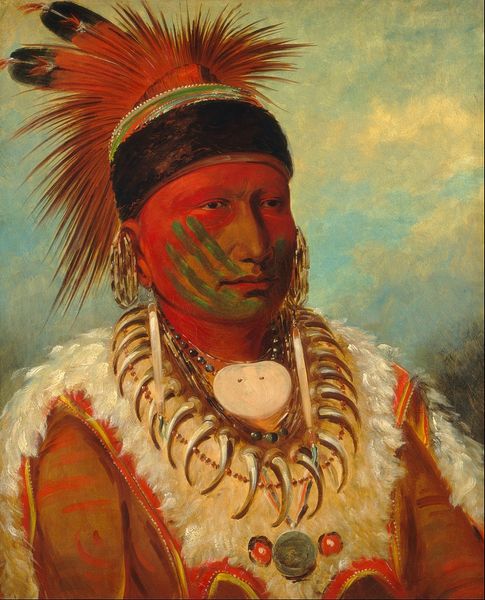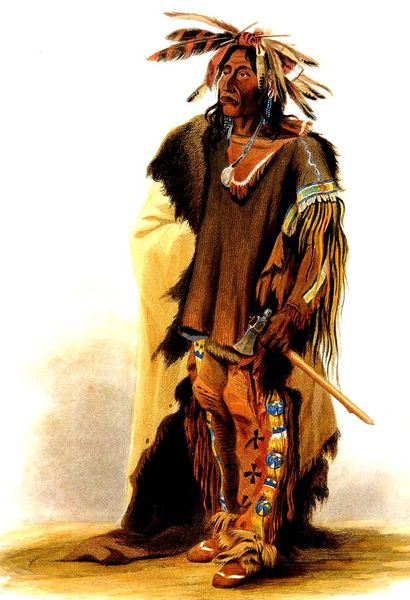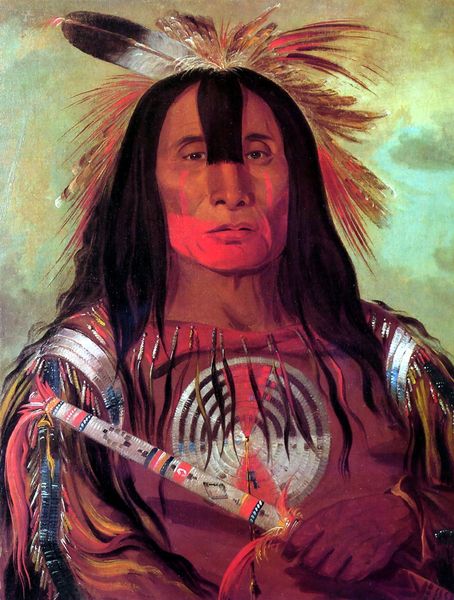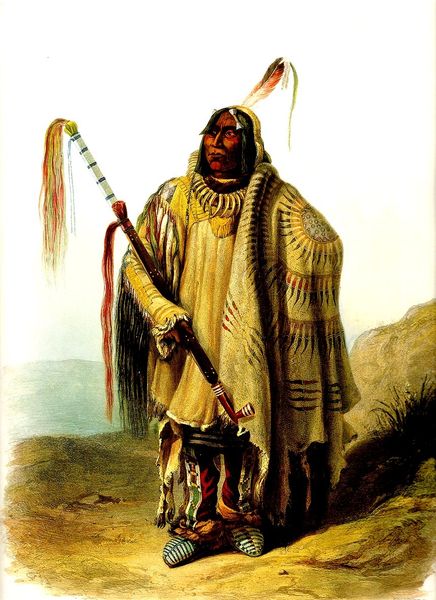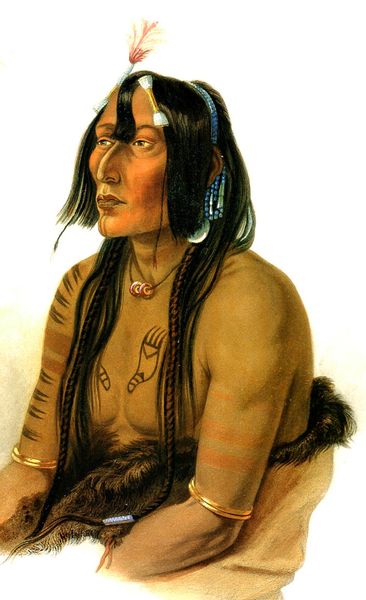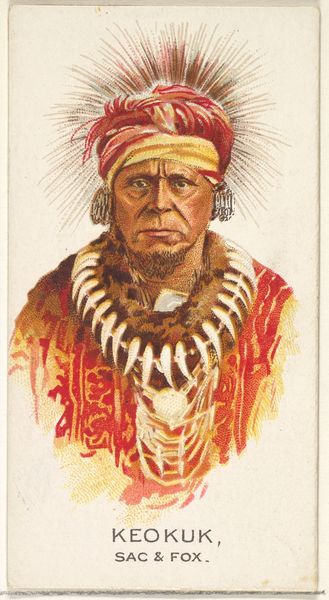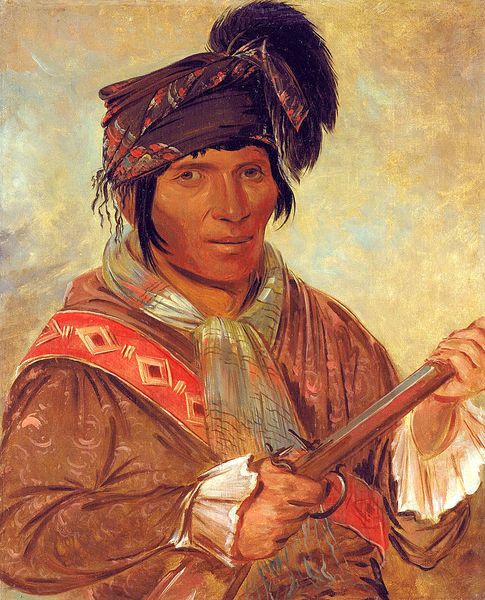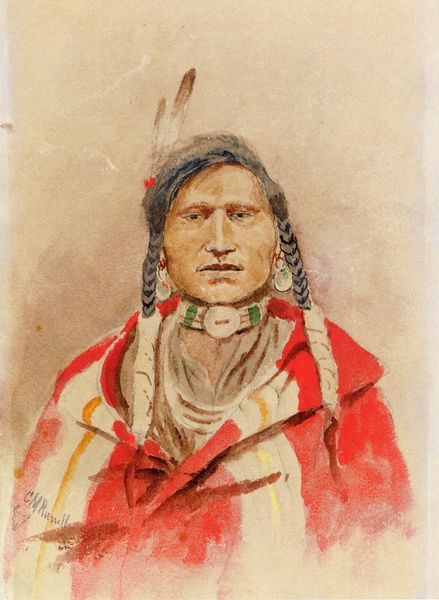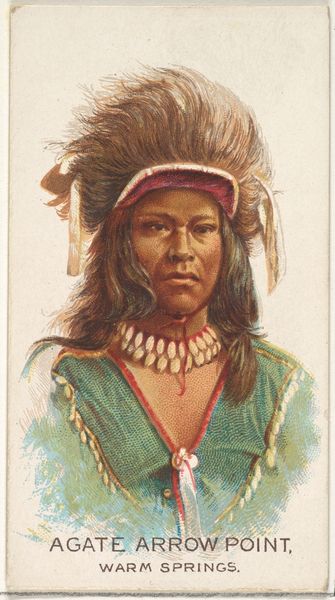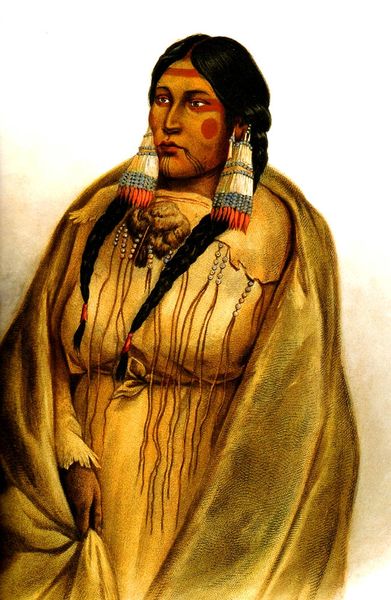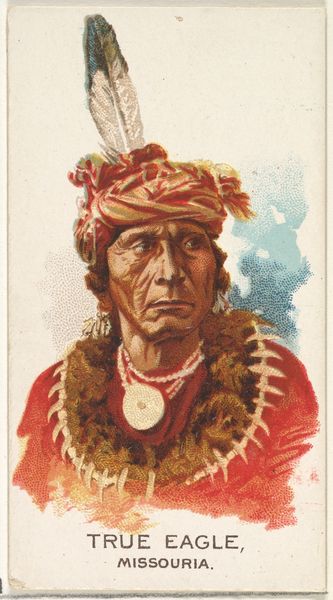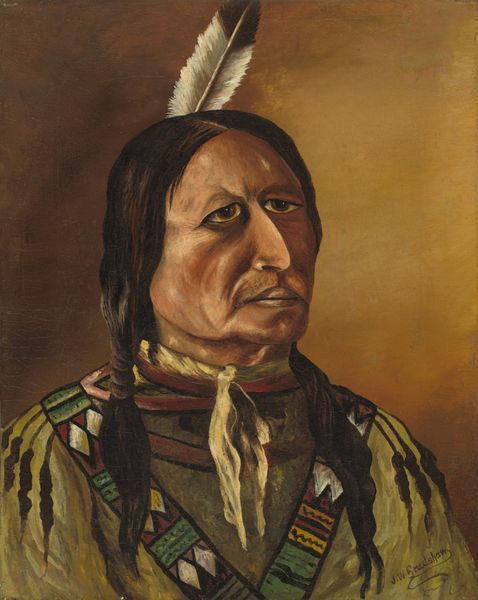
Massika-Saki Indian, Wakusasse-Musquake Indian, plate 3 from Volume 1 of 'Travels in the Interior of North America' 1833
0:00
0:00
lithograph, print
#
portrait
#
lithograph
# print
#
portrait drawing
Copyright: Public domain
Curator: This lithograph, created in 1833 by Karl Bodmer, is titled "Massika-Saki Indian, Wakusasse-Musquake Indian," and is from his "Travels in the Interior of North America." Editor: The visual economy here is really striking. That red cloak pops against the stark white background, drawing your eye immediately to the subject’s profile and that amazing feathered hairstyle. Curator: Bodmer was meticulous in his approach. Think about the printing process, each layer carefully applied, likely mimicking the meticulous crafting that would have gone into the depicted clothing and adornments. The labor behind creating and wearing them. Editor: Yes, and the formal elements—the linear precision of the lines that delineate his face, the subtle gradations of color. It's a very structured depiction, isn't it? The planes of the face are almost geometric. Curator: Absolutely, but I find myself focusing on the materials. Consider the red fabric; how was it sourced? What kind of trade relationships were involved? Who were the producers and consumers implicated in the exchange? The face markings, likely achieved with earth pigments. It all points to an intricate web of material culture. Editor: It's more than just material, though. The composition leads your eye to the details: the earring's dangling prisms catch the light, the lines etched upon his skin narrate something personal, tribal even. This is someone presenting himself with deliberate intention, carefully considered image. Curator: Which leads us to ponder the dynamics of representation and consumption. Bodmer, as an outsider, interprets and then re-presents an indigenous person for a European audience, packaged for easy consumption. What did it mean to flatten cultures into easily consumable images? Editor: But Bodmer captures a certain romantic quality that complicates that reading. A sort of melancholy mixed with resilience. Curator: I agree. He doesn’t reduce the sitter. He highlights both person and garment—in his printmaking and in its time and circulation it shows the complex exchanges of materiality and power at work. Editor: In that regard, both our views aren’t so different, are they? Curator: I suppose not. Let's say we've managed to give our listeners a couple new things to contemplate here today. Editor: I would certainly hope so, indeed.
Comments
No comments
Be the first to comment and join the conversation on the ultimate creative platform.

